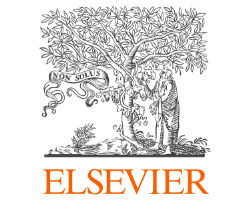A Comprehensive Review on Artificial Intelligence Techniques for Covid-19 Pandemic
Abstract
The pandemic situation due to the emergence of Covid-19 presents various problems physically, economically and mentally for the individuals world-wide, therefore faster solutions with wider access is essential to solve the problems which aids as a support to the healthcare. This is made possible through the incorporation of Artificial Intelligence (AI) technology to handle the situation of pandemic. This paper aims to present a comprehensive re-view of the applications employed using AI for the problems faced during Covid-19 pandemic. The AI applications involved in screening, predicting, forecasting, neighborhood contact tracing and drug discovery of Covid-19 are addressed in this review. This review also presents detailed working of AI algorithms in each application. This paper helps the researchers with vivid information of AI applications of Covid-19 pandemic.
Downloads
References
F. D. Gennaro, “Coronavirus Diseases (COVID-19) Current Status and Future Perspectives: A Narrative Review”, Int. J. Environ. Res. Public Health 2020, vol. 17, no. 2690, 2020. doi:10.3390/ijerph17082690. [Accessed: May. 23, 2020].
C. Huang, Y. Wang, Z. Li, L. Ren, J. Zhao, Y. Hu, L. Zhang, G. Fan, J. Xu, and X Gu, “Clinical features of patients infected with 2019 novel coronavirus in Wuhan, China,” Lancet 2020, vol. 395, pp. 497–506, 2020.
World Health Organization Director-General’s Opening Remarks at the Media Briefing on COVID-19–11, March 2020.
N. Chen, M. Zhou, X. Dong, J. Qu, F. Gong, Y. Han Y, “Epidemiological and clinical characteristics of 99 cases of 2019 novel coronavirus pneumonia in Wuhan, China: a descriptive study. Lancet, vol. 395, pp. 507–13, 2020. doi: 10.1016/S0140-6736(20)30211-7. [Accessed: May. 23, 2020].
Clinical Management of Severe Acute Respiratory Infection When Novel Coronavirus (2019-nCoV), Infection Is Suspected: Interim Guidance, 2020. [Online]. Available: https:// apps.who.int/iris/handle/10665/330893. [Accessed: April. 31, 2020].
A. Zumla, D. S. Hui, and S. Perlman, “Middle East respiratory syndrome,” Lancet, vol. 386, pp. 995–1007, 2015. doi: 10.1016/S0140-6736(15)60454-8. [Accessed: May. 23, 2020].
S. Kathiresan, A. R. W. Sait, D. Gupta, S. K. Lakshmana Prabu, A. Khanna, H. M. Pandey, “Automated detection and classification of fundus diabetic retinopathy images using synergic deep learning model,” Pattern Recogn Lett, vol. 133, pp. 210–6, 2020. doi: 10.1016/j.patrec.2020.02.026. [Accessed: May. 23, 2020].
S. Lalmuanawma, “Applications of machine learning and artificial intelligence for Covid-19 (SARS-CoV-2) pandemic: A review,” Chaos, Solitons and Fractals- Nonlinear Science, and Nonequilibrium and Complex Phenomena.
T. Davenport and R. Kalakota, “The potential for artificial intelligence in healthcare,” Fut Healthc J, vol. 6, no. 2, pp. 94–8, 2019. doi:10.7861/futurehosp.6-2-94. [Accessed: May. 23, 2020].
E. H. Muhammad, and Chowdhury, “Can AI help in screening Viral and COVID pneumonia?,” IEEE ACCESS ,2020
A. Imran, “AI4COVID-19: AI enabled preliminary diagnosis for COVID-19 from cough samples via an app,” Informatics in Medicine Unlocked, May 2020.
X. Mei, “Artificial intelligence–enabled rapid diagnosis of patients with COVID-19,” Nature Medicine, vol. 26, August 2020. [Online]. Available: http:// www.nature.com/naturemedicine. [Accessed: May. 23, 2020].
A. S. Andrew, M. B. Soltan, M. A. Chir, “Artificial intelligence driven assessment of routinely collected healthcare data is an effective screening test for COVID-19 in patients presenting to hospital,” MedRxiv, July 2020.
Z. Hu, Artificial Intelligence Forecasting of Covid-19. in China, 2020.
S. Sengupta, “Covid-19 Pandemic Data Analysis and Forecasting using Machine Learning Algorithms,” medRxiv, 2020. [Online]. Available: https:// doi.org/10.1101/2020.06.25.20140004. [Accessed: May. 23, 2020].
C. Iwendi, “COVID-19 Patient Health Prediction Using Boosted Random Forest Algorithm,” Front. Public Health, July. 3, 2020.
R. Sujath, “A machine learning forecasting model for COVID-19 pandemic in India,” Stochastic Environmental Research and Risk Assessment, vol. 34, pp. 959–972, 2020.
T. Hope, J. Portenoy, K. Vasan, J. Borchardt, E. Horvitz, D. S. Weld, M. A. Hearst, and J. West, SciSight: Combining faceted navigation and research group detection for COVID-19 exploratory scientific search, 2020. doi: https:// doi.org/10.1101/2020.05.23.112284. [Accessed: May. 23, 2020].
CDC, Contact tracing. [Online]. Available: https:// www.cdc.gov/coronavirus/2019-ncov/php/open-america/contact-tracing.html. [Accessed: December 18, 2020].
WHO, Operational planning guidelines to support country preparedness and response. WHO, 2020.
K. Vasanth, Tackling covid-19: The technology behind contact tracing. Greatlearning, 2020. [Online]. Available: https:// www.mygreatlearning.com/blog/covid-contact-tracing/. [Accessed: December 18, 2020].
L. J. Kricka, “Artificial Intelligence-powered search tools and resources,” in the fight against COVID-19, eJIFCC2020, vol. 31, no. 2, pp. 106-116, 2020.
Anonymous. [Online]. Available: https:// marketinginasia.com/2020/04/30/tracing-a-million-steps-sqreem-launches-ai-driven-contact-tracing-and-communications-platform-to-fight-covid-19/. [Accessed: December 18, 2020].
The drug development process, US Food and Drug Administration. January. 4, 2018. [Accessed: December 18, 2020].
Current Model for Financing Drug Development: From Concept Through Approval. Institute of Medicine (US), Forum on Drug Discovery, Development, and Translation, National Academies Press, Washington (DC). 2009.
R. Batra, H. Chan, G. Kamath, R. Ramprasad, M. J. Cherukara, and K. R. S. Sankaranarayanan, “Screening of Therapeutic Agents for COVID-19 Using Machine Learning and Ensemble Docking Studies,” The Journal of Physical Chemistry Letters, vol. 11, no. 17, pp. 7058-7065, 2020. doi: 10.1021/acs.jpclett.0c02278. [Accessed: December 18, 2020].
S. Mohapatra, “Repurposing Therapeutics for COVID-19: Rapid Prediction of Commercially available drugs through Machine Learning and Docking,” medRxiv, April. 23, 2020.

























